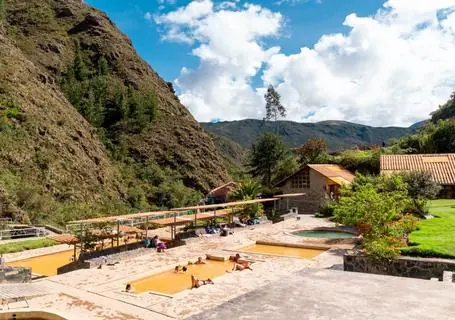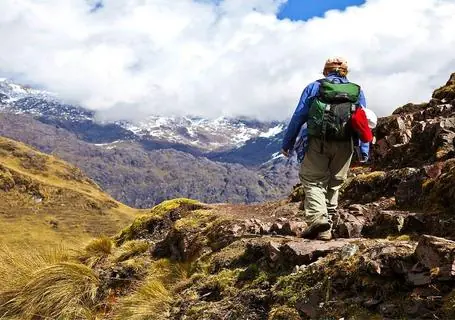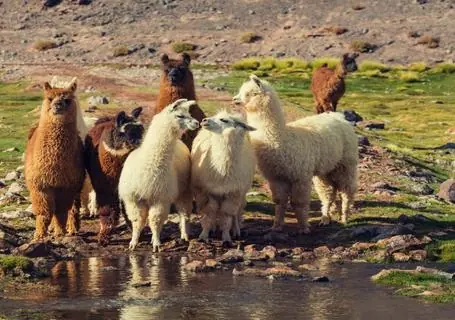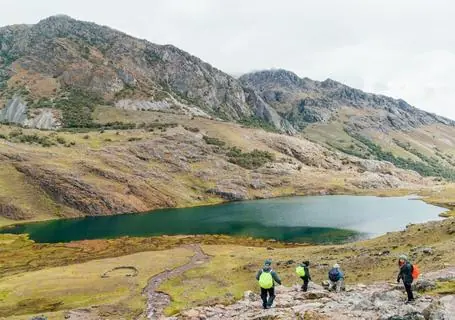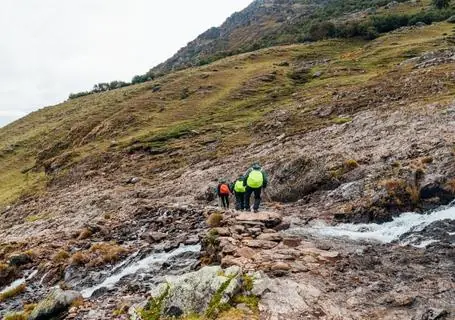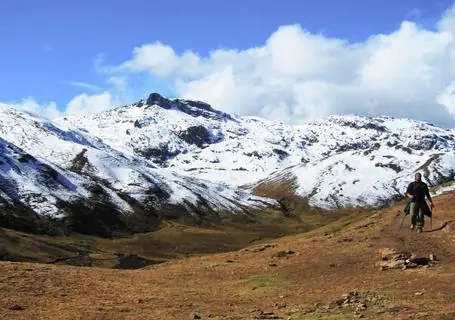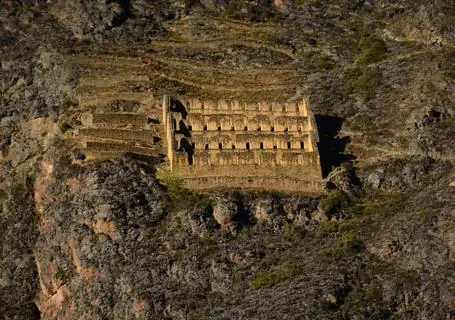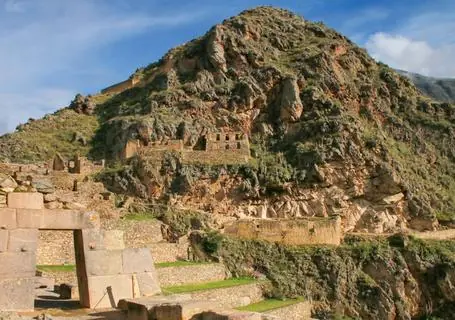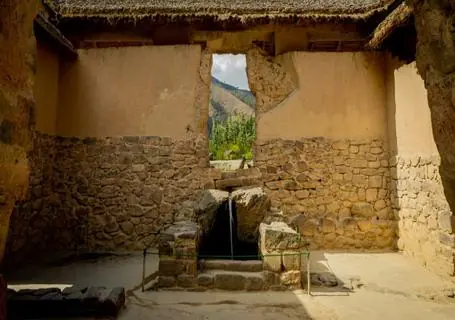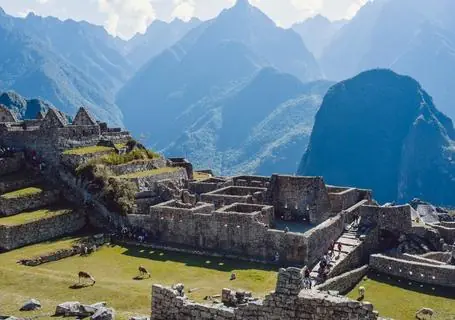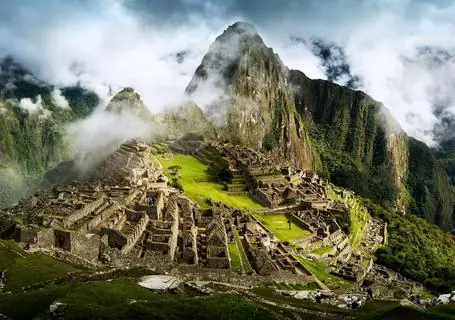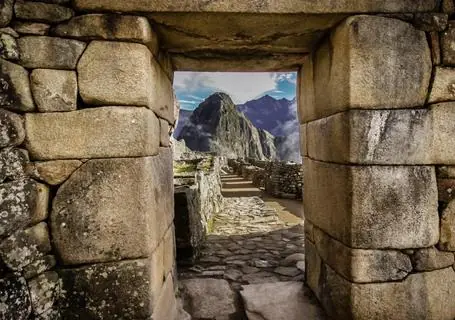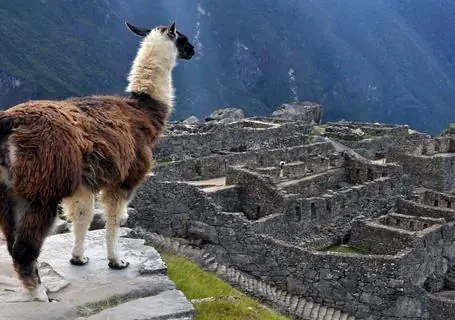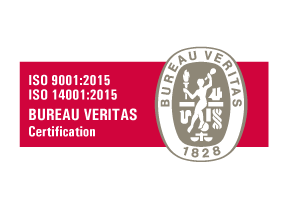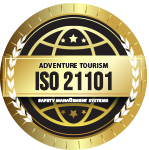Lares Trek to Machu Picchu - 4 Days
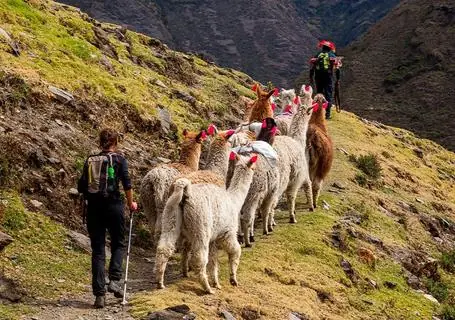
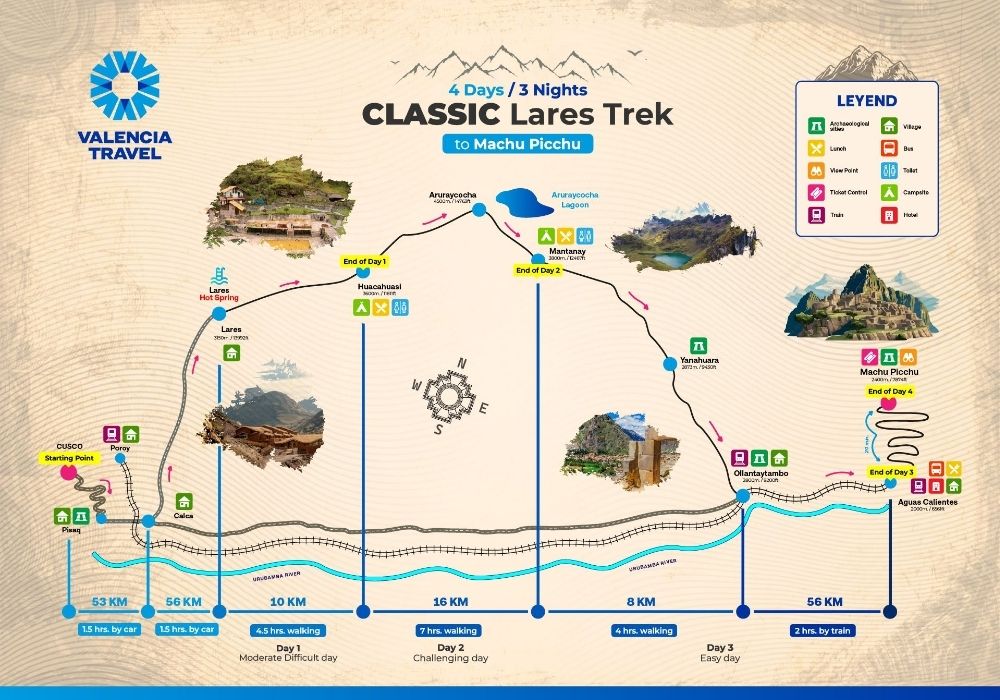

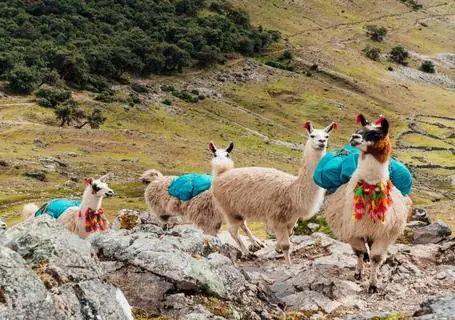
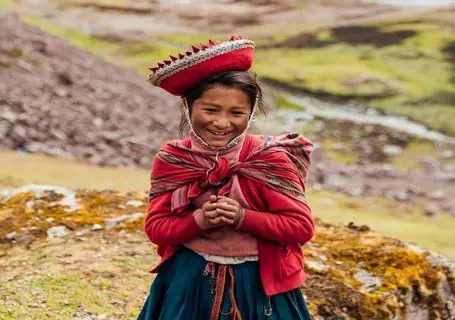
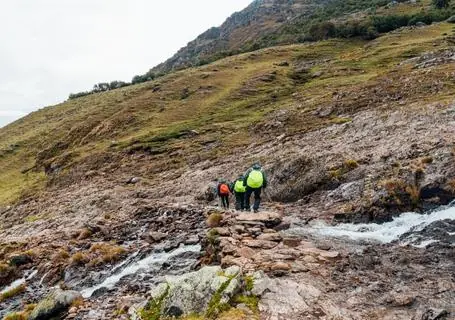
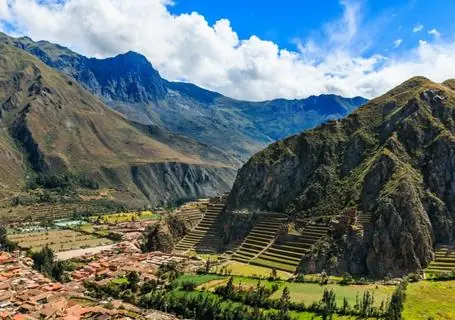 View All PhotosView All Photos
View All PhotosView All PhotosAdventure
Moderate - Demanding
Cusco, Lares, Lares Trek, Machu Picchu
Hiking / Trekking, Archaeological / Architecture, Thermal waters
cardinfo-price-per-adult
cardinfo-text-1 cardinfo-text-2
| cardinfo-text-5 | ||
| cardinfo-text-7 | Not included | |
| cardinfo-text-8 | cardinfo-not-included | |
cardinfo-text-10
h2-title-1
The Lares Trek, which finishes in Machu Picchu, is one of the most popular alternative Machu Picchu hikes to the classic Inca Trail, showcasing cultural encounters on the Lares Trek and authentic Andean villages along the Lares Trek. It doesn’t include as many Inca ruins as seen on the Inca Trail, but it more than makes up for that by offering fascinating high-altitude hiking in Peru through magical landscapes and a far more in-depth look at local life in this part of Peru (a cultural element not found on the classic Inca Trail trek). The Lares Trek is also slightly shorter – but higher – than the Inca Trail, and you’ll see far fewer trekkers along the route. The Lares Valley hike difficulty level is generally higher, yet with fewer steep ascents and descents, making the Lares Trek perfect for families with children. An excellent alternative Machu Picchu hike.
Our Lares Trek to Machu Picchu -4-day itinerary takes you deep into the heart of the Andes, to a remote landscape of towering mountains, shimmering mountain lakes and staggering views. With this Machu Picchu tour package, you’ll also experience the living traditions of the local people as we pass through ancient villages, meeting friendly Quechua people who will be happy to share their culture with you on your Lares to Machu Picchu itinerary.
And then, of course, there’s our final destination: Machu Picchu. We’ll get there on Day 4, and you’ll have plenty of time to explore the magnificent Inca citadel, one of the seven new wonders of the world.
If you are looking for a guided Lares Trek with Local experts, cultural encounters on the Lares Trek, or a lares Trek for families with children, for your Inca Trail alternatives, then look no further than Valencia Travel Cusco for your all-Inclusive Lares Trek packages!
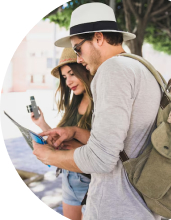 Free Brochure
Free BrochureReady to explore? Download the brochure and start planning!
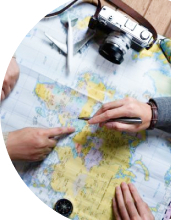
Your FREE travel expert is just a click away
Or Call us now! (888) 803 8004
h2-title-2
Day 1:Your Lares Trek Begins!
The first day begins early in the norming when we pick you up in Cusco. We will then drive to Calca, a small town in the Sacred Valley. Here you’ll have your last chance to buy any last-minute supplies. Continuing on, we’ll drive for about 1.5 hours in the direction of Lares, passing the highest point for the day at 4,265 meters above sea level (13,992 ft), where the Sawasiray and Pitusiray mountains rise up. We’ll then descend into the Lares Valley until we reach the small village of Lares.
In Lares we can make the most of the local hot springs, which are famous in the Cusco Region for their healing properties. These natural springs are said to be excellent for stomach and rheumatic diseases, conditions such as arthritis, as well as for treating fractures, muscular pains and more. We’ll have lunch in Lares and then get ready to start our hiking adventure.
From Lares we’ll head off on foot towards Huacawasi, a colorful little town of adobe houses and roaming llamas, located at about 3,600 m (11,811 ft) above sea level. It will take us about four or five hours to trek to Huacawasi, where we’ll have dinner and camp for the night. Huacawasi is a traditional weaving community, and you’ll be able to spend some time watching the local weavers at work, and maybe have a go yourself.
Hiking Time: 4 hours approx.
Hiking Distance: 10 Km / 6.21 miles
Lowest Point: 3,207 m / 10,521 ft
Highest Point: 4,265 m / 13,992 ft
- Meals: Lunch, Dinner
- Tour Guide: Local Tour Guide: English/Spanish.
- Transfer: Cusco – Calca – Lares (Huacawasi).
- Entrance Fee: Lares Trail
- Horseman and Mules: To carry cooking and camping equipment.
- Camp site: Huacawasi (Tent per 2 people).
Day 2:The Highest Point of the Lares Trek.
We’ll start the day early in the morning with a hearty breakfast, to get our energy levels up for what is probably the toughest day of our trek. Setting off, it’s a steep uphill climb to a mountain pass at about 4,500 meters above sea level – the highest point reached on our Lares trek. The view from up here is sublime, looking out across the surrounding mountains and down to the beautiful Aruraycocha Lake below us. We’ll then head downhill towards the lake, stopping off to admire its clear glacial waters.
We’ll then head on through the Mantanay conservation area, where the natural environment changes. This region has forests of polylepis trees, known locally as queuñas, which provide an important refuge for many bird species, including some that are endangered. Mantanay is also dotted with lagoons, around which various hardy shrub and tree species grow. We’ll have lunch on the banks of one of these pretty lakes. If we’re lucky, we might even see a huge Andean condor as it swoops overhead.
After lunch, we’ll continue our downhill trek until we reach the village Mantanay, our second campsite, at about 3,800 meters. This is another great opportunity to interact with the local villagers and see how they live their lives in this remote region. At Mantanay we will have a tasty dinner and bed down for the night.
Hiking Time: 7 hours approx.
Hiking Distance: 14 Km / 8.69 miles
Lowest Point: 3,800 m / 12,467 ft
Highest Point: 4,500 m / 14,763 ft
- Meals: All Included
- Tour Guide: Local Tour Guide: English/Spanish.
- Horseman and Mules: To carry cooking and camping equipment.
- Camp site: Mantanay (Tent per 2 people).
Day 3:Lares Trek to Aguas Calientes.
Our final day of trekking will be a relatively easy walk of between four and five hours. We will leave Mantanay after breakfast and head towards the pretty colonial town of Yanahuara in the Sacred Valley, passing through more spectacular scenery where the Incas once roamed. The weather should be warmer as we descend towards Yanahuara, passing near fields of white corn typical of this region. Once we reach Yanahuara, we’ll have our last meal together. At this point, our cooks and porters will leave you in the capable hands of your guide. This marks the end of our Lares trek.
From here, we will travel by minibus to the wonderful Inca archaeological site of Ollantaytambo, one of the most famous ruins in the Cusco Region. The sprawling mountainside complex was once the royal estate of the Inca emperor Pachacuti. After exploring these extensive ruins, we´ll take the train to Aguas Calientes, where we’ll have dinner and spend the night in a hotel, not far from our final destination: the magnificent Machu Picchu.
Hiking Time: 4 hours approx.
Hiking Distance: 7 Km / 4.35 miles
Lowest Point: 2,950 m / 9,678 ft
Highest Point: 3,800 m / 12,467 ft
- Meals: All Included
- Tour Guide: Local Tour Guide: English/Spanish.
- Transfer: Yanahuara - Ollantaytambo Train Station.
- Train Ticket: Ollantaytambo Train Station - Aguas Calientes
- Hotel: Machupicchu Adventure House, (or similar) - Standard double Room with private bathroom
Day 4:Lares Trek Highlight - Machu Picchu!
To best appreciate Machu Picchu, we’ll wake up early in the morning so we can get to the citadel in good time. You’ll have time for breakfast first, and then your guide will pick you up from the hotel at around 5:40 a.m. Then we will walk to the starting point of the bus, a trip of approximately 45 minutes in the direction of the citadel of Machu Picchu.
We’ll then pass through the gates to the Machu Picchu archaeological site. Here you’ll begin your guided walking tour with an experienced and highly knowledgeable guide. Our tour of Machu Picchu will last about two hours and will take you to all the most famous and spectacular parts of the extensive archaeological complex. These include the House of the Guardian, Intihuatana, Temple of the Sun, Sacred Plaza, and other key locations. (It will depend on the circuit that the Ministry of Culture determines).
And as we walk around, we’ll have spectacular views across the agricultural terraces of Machu Picchu and across to the surrounding mountains and plunging gorges.
Once we’ve finished our tour of Machu Picchu, we’ll take the bus back down to Aguas Calientes where you can relax and have lunch (not included) before we board the train back to Poroy and Cusco. Upon arrival at the station, our staff will be waiting for you to take you back to your hotel in Cusco, a quick trip of approximately 25 minutes, where you will be able to remember your incredible tour of one of the most famous and impressive attractions in the world.
- Meals: Breakfast
- Tour Guide: Local Tour Guide: English/Spanish.
- Bus: Aguas Calientes - Machu Picchu - Aguas Calientes (20 Minutes approx).
- Entrance Fee: Machu Picchu Citadel
- Train Ticket: Aguas Calientes to Ollantaytambo or Poroy.
- Transfer: Ollantaytambo Train Station - Cusco Hotel.
h2-title-3
Secure your spot on the trip now with our real-time availability information.
Act quickly—these spots sell out fast!
h2-title-4
whats-included-title
- Briefing to the tour one day before the trek at 19h00.
- Accommodation: Huacawasi Camp (1 night), Mantanay Camp (1 night), Aguas Calientes Hotel (1 night)
- Camping Equipment and Hotel
- Meals: 3 breakfasts, 3 lunches, 3 dinners.
- Transport: Shared Services
- Your Journeys Highlight Moment: Lares Trek and Machu Picchu.
- All transport between destinations and to/from included activities.
- Duffle bag 7kg (to be carried by the mules).
- Emergency mule for riding if required along the Lares trek.
- A professional guide who speaks English.
- Train ticket from Aguas Calientes to Poroy. (or Av. el Sol when it is a bimodal service). This train ticket is The Voyager Train or Expedition Train and leaves Aguas Calientes station.
- Entrance fee to Lares and Machu Picchu.
- First aid kit.
- Round-trip bus ticket: from Aguas Calientes to Machu Picchu and back
- 24/7 support and an emergency line are available throughout the itinerary.
whats-not-included-title
- Airfare to and from Cusco.
- Minimum medical and emergency evacuation insurance.
- Trip cancellation insurance or any other travel insurance.
- Evacuation: in the event of a serious medical injury, we will coordinate with your travel insurance company to arrange an evacuation.
- Any activity not described in What's Included.
- Meals on your own.
- Tips/Gratuities.
- Optional excursions.
- Trekking equipment such as walking sticks, sleeping bags, or inflatable mattresses on the Lares trek.
- Damages caused by the client to the bus or to the camping equipment.
h2-title-5

specialist-box-title
Maria Diaz
specialist-box-phrase
top-tours-title
top-tours-info
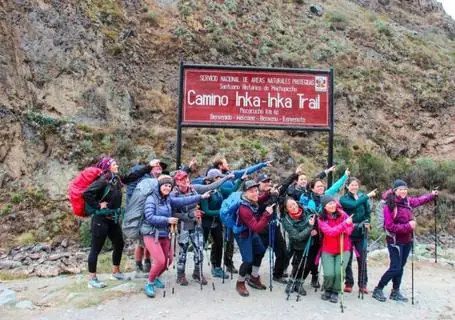
Trek Along the Inca Trail To Machu Picchu
7daysTrek Along The Inca Trail To Machu Picchu with Valencia Travel. We are a renowned Peruvian tour company offering trekking experiences throughout Peru.
card-type-tagAdventure
card-activity-tagModerate - Demanding

Classic Peru Trip
7daysValencia Travel's classic Peru trip is a bucket-list adventure. This 7 Day trip will take you on unforgettable experiences throughout the Peruvian heartland.
card-type-tagCultural, Gastronomy
card-activity-tagEasy
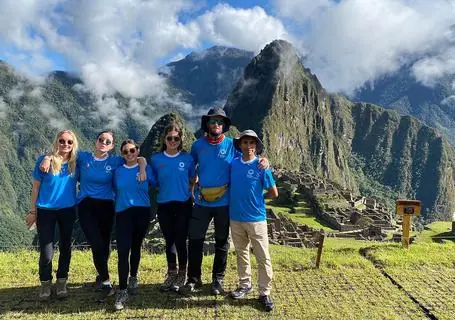
Classic Inca Trail
4daysThe Inca Trail trek to Machu Picchu is the ultimate bucket list hiking experience! Join us on this Classic 4 Day & 3 night Inca Trail Hike!
card-type-tagAdventure
card-activity-tagModerate - Demanding
asso-info-title
asso-info-description
